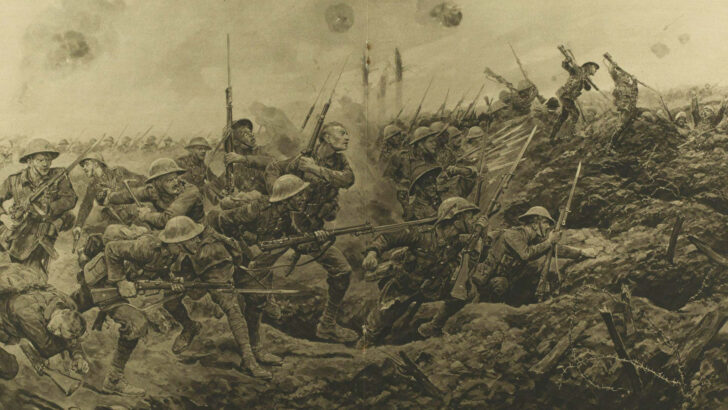A Kerry Odyssey: The Boer War and Great War Experiences of John J. Moore, by Martin Moore (Gabha Beag Publications, Tralee, €24.00/ £20.99)
This is a fascinating account of the remarkable military career of John J. Moore, written by his grandnephew. It is a remarkable record of an Ireland we have almost lost sight of.
John Moore was born in Listowel, Co Kerry, on 28 May 1873. After attending the national school he was apprenticed for seven years to his father, a blacksmith who conducted his trade in a forge in the town’s Pound Lane. Then in 1897, aged 24, he joined the British army in Limerick and requested to join the Royal Engineers. He ‘took the shilling’ because the army guaranteed a decent living, adventure and an opportunity to visit countries beyond his native shores.
Following his training at the Depot of the Royal Engineers in London, he and his colleagues soon found themselves involved in the Boer War. Initially they assisted in the defence of Kimberley. Later they took part in the fighting at Driefontein and other crucial engagements.
During the war, which came to a final end with the Treaty of Vereeniging in May 1902, the engineers were engaged in constructing the “concentration camps” in which rural families of the Boer commandos on the run were interned, as well as the actual prisoner of war camps in which captured Boers were detained.
Back in London in 1903 Moore availed of the opportunity to visit his home. While in Listowel, he married Mary Anne Reidy, who resided near his father’s forge. As he did not request nor receive formal permission from the military authorities, John and Mary had to exchange their marriage vows again at Salisbury in Wiltshire in 1908.
Urgently
In November 1913 the New Zealand government urgently requested the War Office to send Royal Engineer instructors to whip their new citizen army into shape. Moore was one of the four sergeant majors sent to New Zealand. Following their training, the new army joined Australian forces and headed for the landings in Turkey in April 1915.
The New Zealanders went ashore at Gallipoli. They were hemmed in near the shore by German and Turkish soldiers who occupied the ground above them. But they succeeded in holding their positions until the general retreat eight months later.
Moore was later decorated for his bravery and service in the defence of a key sector know as Quinn’s Post. For both countries this was a nation making experience, now marked on ANZAC Day, April 25, still celebrated each year by the two communities in Ireland.
After a rest stint in Egypt the Anzacs were ordered to the Western Front, where they distinguished themselves. Moore and the New Zealanders were in the front line of the offensive in the horrendous and now notorious battle of the Somme, July 1, 1916. Later he was wounded by shrapnel at Messines (south of Ypres in Belgium) in June 1917, and was invalided back to a hospital in England.
After the war Moore returned to New Zealand. The names of candidates for the position of chief engineering instructor at New Zealand’s main army camp were being considered. Notwithstanding the strong presence of Freemasonry in the higher ranks of the New Zealand military (as also in Australia), Moore was appointed to the prestigious position.
Retired
Moore retired from the army in 1921. He and his wife resided at Ruislip in West London, near a Store Depot where he worked as a foreman. He died in November 1932.
More than 300 Kerrymen served in the British, Australian and New Zealand armies at the same time as Moore’s military service. One hundred of these were from North Kerry. A wealth of information about them is provided by the author.
In his narrative he does not fail to highlight the harsh and unforgiving realities of war, nor the changing and developing anti-British environment the Irish soldiers experienced on their visits home. Only now are we gaining a true perspective on what happened in rural Ireland in the “War to end all wars”.
His monograph is history writing at its finest and it is a most valuable contribution to the historiography of North Kerry, and should be warmly welcomed. The book is further enhanced by a most interesting collection of photographs, not least one of John J. Moore’s 10 medals for bravery and service.


 Irish soldiers at Somme on July 1, 1916.
Irish soldiers at Somme on July 1, 1916. 